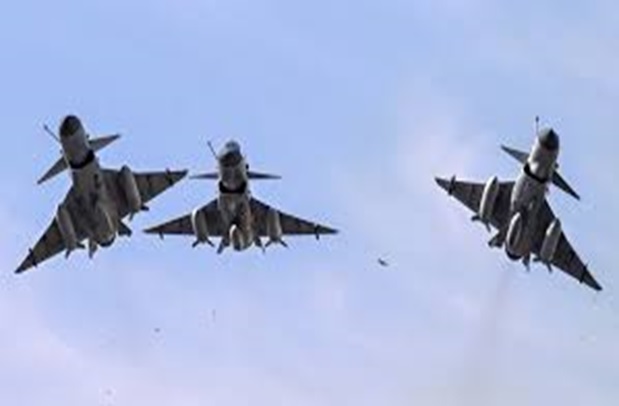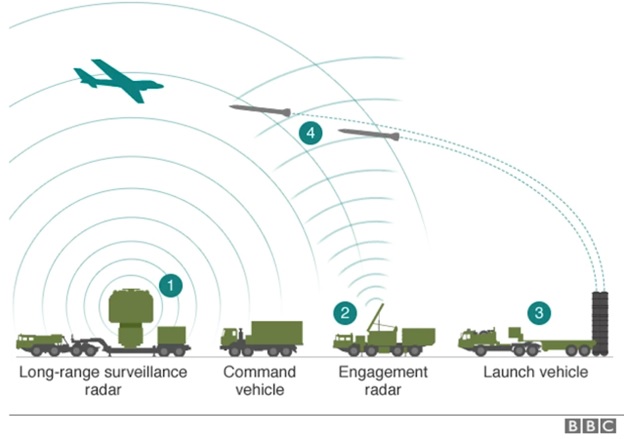
Has Modi Succeeded Diplomatically or Militarily against Pakistan after Pahalgam?
By Riaz Haq
CA

Indian Prime Minister Narendra Modi launched Operation Sindoor to "punish" Pakistan after blaming it for the Pahalgam militant attack without offering any evidence. He then quickly proceeded to seek and accept a US-brokered ceasefire within 100 hours of launching military strikes on Pakistan. Now he claims that India has succeeded in achieving its Operation Sindoor objectives.
Let's examine Mr Modi's claim of victory after seeking and accepting a ceasefire so soon after launching a large military operation. In terms of diplomacy, India clearly failed to prove its allegations against Pakistan to gain the support of the international community. Many of India's closest friends, including the US and Israel, condemned the Pahalgam attack but none held Pakistan responsible for it. At the same time, Pakistan's closest friends China and Turkey stood solidly with Pakistan.
Militarily, India incurred heavy losses, including the loss of its most advanced Rafale fighter jets in a major aerial battle with the Pakistan Air Force. In fact, Mr Modi was stunned by the robustness of Pakistan's retaliatory precision strikes with high-speed missiles and drone swarms. He said: "Instead of supporting India's strike against terrorism, Pakistan started attacking India itself". He clearly wasn't expecting such a response when he ordered missile strikes against Pakistan.
As for Mr Modi's other claims about India's Operation Sindoor's "successes" against Pakistan, here's a good summation of their reality as seen by a veteran Indian diplomat MK Bhadrakumar :
"The bottom line is, Pakistan has demonstrated its nuclear deterrent capability. It is as simple as that. If Operation Sindoor were to be repeated every now and then, it would only have the same results and be halted unceremoniously within 100 hours. Eventually, it will not only lose all novelty to our ecstatic TV audience, but a troubled nation may eventually start blaming an inept leadership. Pakistan is a major military power. Creating potholes in an odd runway or rendering a radar dysfunctional temporarily will not intimidate that country. Succinctly put, it must be far better for India to take help from Trump, who harbors no animus against us, to solve the problem and move on with life".
Prof John Mearsheimer on International Geopolitics in South Asia
Professor John Mearsheimer, a renowned international relations expert known for his theory of "offensive realism", has recently spoken to India's CNN-News18 about the impact of US-China competition on geopolitics in South Asia. Sharing his thoughts in interviews on the India-Pakistan conflict after the Pahalgam attack, he said : "There is really no military solution to this (Kashmir) problem. The only way this can be solved once and for all is through a political solution that both sides find acceptable".

|
Professor John Mearsheimer is a highly respected professor of political science at the University of Chicago. Here's how he introduces himself on his personal website : "I am the R. Wendell Harrison Distinguished Service Professor in the Political Science Department at the University of Chicago, where I have taught since 1982. Above all else, I am an international relations theorist. More specifically, I am a realist, which means that I believe that the great powers dominate the international system, and they constantly engage in security competition with each other, which sometimes leads to war".
He has said that neither China nor the US wants a full-scale war between India and Pakistan that could escalate into a nuclear war. However, it is in China's interest to "see significant tensions between India and Pakistan to get India to devote a lot of its strategic thinking and resources against Pakistan" rather than on China. The US, on the other hand, wants India to focus all its energies on countering China.
As for " Operation Sindoor ", Mearsheimer said it will not deter Pakistan. "By Operation Sindoor, India has responded like it has in the past. Don't think India wants a major war with Pakistan, it can't dominate on the lower or even the middle rungs of the escalation ladder", he said.
On Chinese involvement in South Asia, Mearsheimer said: "China-Pakistan relations are quite good. The Chinese are providing excellent weaponry to Pakistan and will provide even better weapons in future". "I don’t think China wants an India-Pakistan war but it wants to see significant tensions between India and Pakistan to get India to devote a lot of its strategic thinking and resources against Pakistan", he added.
Talking about the US interest in South Asia, he said: "When it comes to countering China, India is the most important country for the US in South Asia. But the US also wants to maintain good relations with Pakistan to try to peel it away from China".

Russia's S-400 Air Defense System. Source: BBC |
India's S-400 Air Defense System at Adampur
Pakistan claims its air force (PAF) has destroyed India's high-value Russian-made S-400 air defense system (ADS) located at the Indian Air Force (IAF) Adampur air base. India has rejected this claim and posted pictures of Prime Minister Narendra Modi posing in front of its S-400 rocket launchers in Adampur. Meanwhile, there are reports that an Indian S-400 operator, named Rambabu Kumar Singh, was killed at about the time Pakistan claims to have hit it. Pakistan is believed to have targeted the S-400 systems using precision-guided CM-400AKG hypersonic missiles (max range 250 kilometers) launched from its JF-17 fighter aircraft.
How can an independent observer decipher the truth in the midst of these claims and counterclaims? To do that, one must first understand what constitutes the S-400 ADS. Is it just the rocket launchers? Or does it have other critical components like the radar and command-and-control systems? Could it be that the Pakistanis left the launchers alone and targeted and destroyed the radar and the command and control systems? Is that why the system operator was killed?
What is Russia's S-400 ADS?
The S-400 air defense system is designed to provide a layered defense with varying range capabilities. Its primary missiles, the 40N6, have a range of 400 kilometers (250 miles), while the 48N6E3 missiles offer a range of 250 kilometers (160 miles). The S-400 can also engage targets at shorter ranges using the 9M96E and 9M96E2 missiles, with ranges of 40 and 120 kilometers (25 and 75 miles), respectively. The S-400 consists of multiple components. Here's how it works.
1. Long-range surveillance radar tracks objects and relays information to the command vehicle, which assesses potential targets.
2. The target is identified and the command vehicle orders missile launch.
3. Launch data is sent to the best placed launch vehicle and it releases surface-to-air missiles.
4. Engagement radar helps guide missiles towards the target.
The entire system is rendered useless if any of these components are damaged or destroyed.
Death of an S-400 Operator
Indian news outlet First Bihar reported the death of an Indian soldier operating the S-400 Air Defense System in Indian Occupied Jammu and Kashmir at the Adampur Airbase on May 10, 2025. This report was later deleted under pressure from the Indian government, in the same manner as The Hindu newspaper was forced to remove its story about the Indian Air Force's loss of French-made Rafale fighter jets in the aerial battle with the Pakistan Air Force.

India's NDTV Report
Indian journalist Vishnu Som has confirmed in conversation with Shiv Aroor on NDTV that two near-hypersonic missiles fired from a JF-17 jet targeted the Adampur Airbase. One of the missiles reportedly missed, while the outcome of the second is unclear. Aroor added that certain sensitive details about the incident could not be publicly disclosed.
If indeed Vishnu Som's confirmation is accurate, then the question arises as to how did a JF-17 armed with CM-400AKG hypersonic missiles (max range 250 kilometers) gain access to the S-400 system which has anti-access/area denial (A2AD) capabilities? The S-400's long range and ability to engage various aerial threats, including ballistic and cruise missiles, allows it to create a large area where enemy aircraft and missiles are denied access or freedom of operation.
Summary
While there has been no official confirmation of the loss at Adampur, there is considerable circumstantial evidence to suggest that the Pakistan Air Force's fighter jets damaged a Russian-supplied S-400 ADS system operated by the Indian military. This is not the first time a Russian-made S-400 air defense system has been damaged or destroyed. Ukraine destroyed one in Crimea last year. Apparently the S-400 has known vulnerabilities that could have been exploited by both Ukraine and Pakistan.

